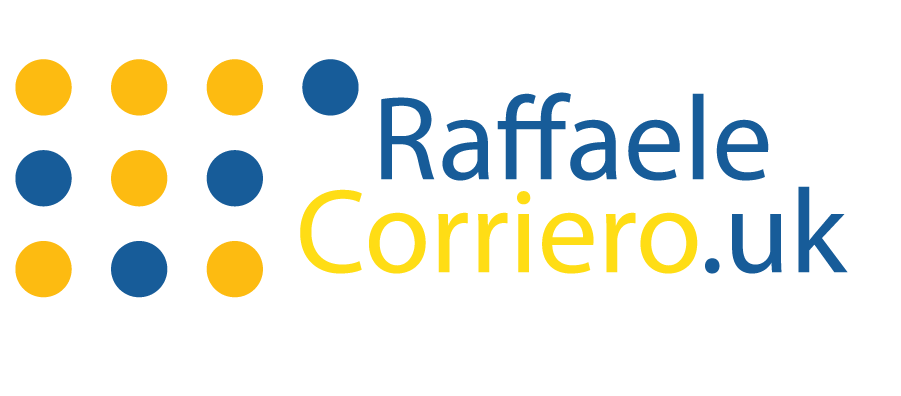Link building remains one of the most challenging yet rewarding aspects of SEO. While quality backlinks can significantly boost your search rankings, finding worthwhile link building opportunities often feels like searching for a needle in a digital haystack. The process can be time-consuming and frustrating without the right approach.
In this comprehensive guide, we’ll explore proven strategies to efficiently identify high-quality link building opportunities that can strengthen your backlink profile and improve your search visibility. Whether you’re an SEO professional managing multiple clients or a business owner handling your own website, these techniques will help you streamline your link prospecting process and focus on opportunities with the highest potential return.
Why Efficiency Matters in Link Building
Before diving into specific strategies, it’s important to understand why efficiency in link building is crucial. Link building is inherently resource-intensive, requiring significant time for research, outreach, and relationship building. Without an efficient approach, you might:
- Waste hours pursuing low-value opportunities
- Miss high-potential link sources hidden in your data
- Struggle to scale your efforts as your site grows
- Fall behind competitors who are more strategic with their outreach
By implementing a systematic approach to identifying link opportunities, you can maximize your results while minimizing the time and resources invested. This guide focuses on techniques that deliver the highest return on effort, helping you build a stronger backlink profile more efficiently.
Leveraging Competitor Analysis for Link Opportunities
One of the most efficient ways to identify link building opportunities is by analyzing your competitors’ backlink profiles. This approach allows you to discover proven link sources that are already working in your niche, saving you the guesswork of determining which websites might be willing to link to content in your industry.
Tools for Competitor Backlink Analysis
Several powerful tools can help you analyze competitor backlinks effectively:
Ahrefs
Offers comprehensive backlink analysis with filtering options to identify high-authority links. Their Site Explorer tool allows you to see all backlinks pointing to a competitor’s domain.
Semrush
Provides detailed backlink gap analysis to identify domains linking to competitors but not to you. Their Backlink Analytics tool helps identify your competitors’ most valuable links.
Moz Link Explorer
Offers insights into competitors’ most valuable links with metrics like Domain Authority and Spam Score to help prioritize opportunities.
Step-by-Step Competitor Link Analysis Process
- Identify your top competitors – Start with 3-5 competitors who rank well for your target keywords. Include both direct business competitors and content competitors who may not sell the same products but compete for the same search terms.
- Analyze their backlink profiles – Use your chosen SEO tool to export their backlinks, focusing on referring domains rather than total backlinks to avoid counting multiple links from the same domain.
- Filter for quality – Sort the results by domain authority or rating to focus on high-quality opportunities first. Remove low-quality sites, irrelevant niches, and obvious spam.
- Identify link patterns – Look for patterns in how competitors are acquiring links. Are they getting featured in industry roundups? Guest posting on specific sites? Being listed in resource directories?
- Create a prioritized outreach list – Organize opportunities based on potential value and likelihood of success. Sites that link to multiple competitors should be high on your list.
Need help analyzing your competitors’ backlinks?
Our team of SEO experts can identify the most valuable link opportunities from your competitors’ profiles and develop a targeted outreach strategy to secure those links for your website.
Finding Unlinked Brand Mentions
Unlinked mentions represent one of the lowest-hanging fruits in link building. These are instances where your brand, product, or content is mentioned online without a hyperlink back to your website. Converting these mentions into actual links is relatively straightforward since the website owner has already demonstrated willingness to reference your brand.
Tools for Tracking Brand Mentions
Google Alerts
A free tool that sends notifications when your specified terms appear in new content across the web. Set up alerts for your brand name, product names, and key personnel.
Mention
Provides real-time monitoring of brand mentions across the web, social media, forums, and more with advanced filtering options.
BrandMentions
Specializes in finding unlinked mentions with features to help you identify and prioritize the most valuable conversion opportunities.
Process for Converting Unlinked Mentions to Links
- Set up monitoring – Configure your chosen tools to track mentions of your brand, products, key personnel, and content titles.
- Filter for unlinked mentions – Review the results to identify mentions that don’t include a link to your website.
- Assess the value – Prioritize mentions on authoritative, relevant websites with good traffic.
- Craft personalized outreach – Thank the author for mentioning your brand and politely suggest adding a link to help their readers find more information.
- Follow up – If you don’t receive a response, send a gentle reminder after 5-7 days.
When reaching out about unlinked mentions, focus on how adding the link benefits the website owner and their audience, not just your SEO goals. Mention that the link will provide additional context and value for their readers.
Mastering Broken Link Building
Broken link building is a highly effective white-hat strategy that provides value to website owners while earning you quality backlinks. The concept is simple: find broken links on relevant websites, create content that could replace the broken resource, and then reach out to the website owner suggesting your content as a replacement.
Step-by-Step Broken Link Building Process
- Identify relevant resource pages – Look for pages in your industry that curate links to helpful resources. These often include terms like “resources,” “links,” or “useful sites” in their URLs or titles.
- Check for broken links – Use browser extensions like Check My Links or Broken Link Checker to scan these pages for broken links.
- Verify the broken content – Use the Wayback Machine (archive.org) to see what content was previously at the broken URL.
- Create replacement content – Develop content that serves a similar purpose but provides even more value than the original broken resource.
- Reach out with your solution – Contact the website owner, alert them to the broken link, and suggest your content as a replacement.
Tools for Finding Broken Links
Check My Links (Chrome Extension)
A free browser extension that quickly scans any webpage for broken links, highlighting them in red for easy identification.
Ahrefs’ Broken Link Checker
Allows you to find broken outbound links on any website, with additional metrics to help prioritize opportunities.
Screaming Frog SEO Spider
A more advanced tool that can crawl entire websites to find broken links, with filtering options to focus on specific sections or link types.
Effective Outreach for Broken Link Building
The success of broken link building largely depends on your outreach approach. Here’s a template that has proven effective:
Subject: Broken link found on [Their Page Name]
Hi [Name],
I was browsing your excellent resource page on [topic] and noticed that the link to [broken link description] is no longer working.
I recently published a comprehensive guide on [related topic] that covers similar information and might be a good replacement for the broken link. You can check it out here: [Your URL]
Either way, I thought you’d want to know about the broken link to maintain the quality of your helpful resource page.
Thanks for your time,
[Your Name]
Pro Tip: Focus on being helpful rather than promotional. Position yourself as someone who’s helping them maintain their website quality, with your content as a solution to their problem.
Finding and Targeting Resource Page Opportunities
Resource pages are web pages specifically created to curate helpful links on a particular topic. They represent excellent link building opportunities because their entire purpose is to link out to valuable content. When your content truly adds value to these pages, securing links becomes much easier.
How to Find Relevant Resource Pages
Use these search operators in Google to discover resource pages in your niche:
| Search Operator | What It Finds | Example |
| intitle:resources [your keyword] | Pages with “resources” in the title related to your keyword | intitle:resources link building |
| [your keyword] inurl:links | Pages with “links” in the URL related to your keyword | SEO inurl:links |
| [your keyword] “helpful resources” | Pages that mention “helpful resources” related to your keyword | content marketing “helpful resources” |
| [your keyword] “recommended sites” | Pages that list “recommended sites” in your niche | digital marketing “recommended sites” |
| site:.edu [your keyword] resources | Educational resource pages related to your keyword | site:.edu SEO resources |
Evaluating Resource Page Quality
Not all resource pages are created equal. Prioritize your outreach efforts by evaluating:
- Page authority – Higher authority pages pass more link value
- Relevance – How closely the page aligns with your content topic
- Curation quality – Pages that are actively maintained and selective about inclusions
- Number of outbound links – Pages with fewer links typically pass more value per link
- Traffic potential – Pages that receive organic traffic can also drive referral visitors
Crafting Effective Resource Page Outreach
When reaching out to resource page owners, focus on how your content adds value to their collection. Here’s an effective approach:
Subject: Suggestion for your [Topic] resource page
Hi [Name],
I recently came across your excellent collection of [topic] resources at [URL]. I particularly appreciated [specific detail about their page that shows you actually looked at it].
I wanted to suggest another resource that might be valuable for your visitors. We’ve created a comprehensive guide on [your content topic] that covers [brief description of what makes your content valuable and unique].
You can check it out here: [Your URL]
I believe it would complement your existing resources by providing [specific value it adds to their collection].
Either way, thanks for maintaining such a helpful resource for the community!
Best regards,
[Your Name]
Key Strategy: Before reaching out, make sure your content is truly worthy of inclusion. Resource page curators are looking for comprehensive, unique, and valuable content that will benefit their audience.
Leveraging the Skyscraper Technique
The Skyscraper Technique, popularized by Brian Dean of Backlinko, is a content-driven link building strategy that involves creating content that improves upon existing high-performing assets, then reaching out to sites that link to the original content. This approach is particularly effective because you’re offering something demonstrably better than what these sites are already linking to.
The Three-Step Skyscraper Process
- Find link-worthy content – Identify content in your niche that has generated a significant number of backlinks
- Create something better – Develop content that improves upon the original in terms of depth, recency, design, or usability
- Reach out to the right people – Contact websites that link to the original content and show them your improved version
Finding Link-Worthy Content to Improve
To identify content worth “skyscraping,” look for pieces that have already proven their link-worthiness:
- Use Ahrefs’ Content Explorer to find the most-linked content in your niche
- Analyze top-ranking content for competitive keywords in your industry
- Check BuzzSumo for highly-shared content related to your topics
- Review your competitors’ most linked pages using backlink analysis tools
Ways to Make Your Content Better
There are several approaches to improving upon existing content:
More Comprehensive
Expand the scope to cover additional related topics or go into greater depth on existing points. If the original covers 10 strategies, create a guide with 25 strategies.
More Current
Update outdated information with the latest research, statistics, and developments in your field. Include recent case studies and examples.
Better Visual Design
Improve readability and engagement with custom graphics, charts, infographics, and a more user-friendly layout.
More Actionable
Add step-by-step instructions, templates, checklists, or tools that help readers implement the information.
Better Researched
Include original research, data, or expert quotes that weren’t in the original content.
Different Format
Transform a text-based article into an interactive tool, video, or downloadable resource that offers more utility.
Effective Skyscraper Outreach
The success of the Skyscraper Technique hinges on effective outreach. Here’s a template that works well:
Subject: Content you might want to check out for [Their Site Name]
Hi [Name],
I noticed you linked to [Original Content Title] in your excellent article about [Topic].
I wanted to let you know that we’ve just published a more comprehensive and updated guide on the same topic: [Your Content Title].
Our guide includes:
– [Specific improvement #1]
– [Specific improvement #2]
– [Specific improvement #3]
You can check it out here: [Your URL]
Might be worth mentioning on your page since it’s more [comprehensive/up-to-date/actionable] than the current resource you’re linking to.
Either way, keep up the great work with [Their Site Name]!
Best,
[Your Name]
Need help creating skyscraper content?
Our content team specializes in developing comprehensive, data-driven content that outperforms existing assets in your industry. Let us help you create link-worthy resources that drive organic backlinks.
Local and Industry-Specific Link Building Opportunities
While many link building strategies apply across all niches, local businesses and industry-specific websites have unique opportunities that shouldn’t be overlooked. These specialized tactics often yield highly relevant links that can significantly impact your local search visibility and industry authority.
Local Link Building Tactics
Local Business Directories
Submit your business to high-quality local directories like your Chamber of Commerce, local business associations, and industry-specific local listings.
Local Media Coverage
Develop relationships with local news outlets, bloggers, and journalists who cover stories in your area. Share newsworthy updates about your business.
Community Involvement
Sponsor local events, sports teams, or charities that will mention your business and link to your website from their sponsors page.
Finding Local Link Opportunities
Use these search operators to discover local link building opportunities:
| Search Operator | What It Finds |
| [city name] intitle:directory | Local business directories specific to your city |
| [city name] intitle:resources | Resource pages for your local area |
| [city name] “submit listing” | Sites where you can submit your business listing |
| [city name] “sponsored by” | Local events or organizations seeking sponsors |
| [city name] “write for us” | Local publications accepting content contributions |
Industry-Specific Link Building Tactics
Industry Associations
Join relevant industry associations and professional organizations that list their members with links to their websites.
Niche Directories
Submit your site to directories specific to your industry that curate quality resources and businesses.
Supplier/Vendor Relationships
Get listed on your suppliers’ or vendors’ websites as a customer or partner, often with a link to your site.
Industry Forums
Participate actively in industry-specific forums and communities where you can establish expertise and earn natural links.
Niche Guest Posting
Contribute guest articles to publications specifically focused on your industry or niche.
Industry Awards
Apply for industry awards and recognitions that typically link to winners and nominees.
Pro Tip: For both local and industry-specific link building, relevance is often more important than domain authority. A link from a smaller site that’s highly relevant to your location or industry can be more valuable than a link from a higher-authority site with no topical relevance.
Tools and Automation for Efficient Link Prospecting
To truly streamline your link building process, leveraging the right tools is essential. These solutions can automate repetitive tasks, help you discover opportunities at scale, and organize your outreach efforts effectively.
Essential Link Building Tools
Prospecting Tools
- Ahrefs – Comprehensive backlink analysis and content explorer
- Semrush – Backlink gap analysis and domain overview
- BuzzStream Discovery – Find influencers and websites in your niche
- Pitchbox – Automated prospecting and outreach platform
Contact Finding Tools
- Hunter.io – Find email addresses associated with domains
- Voila Norbert – Verify email addresses before outreach
- FindThatLead – Discover contact information for prospects
- LinkedIn Sales Navigator – Find decision-makers at target companies
Outreach and Management Tools
- BuzzStream – CRM specifically designed for link building
- Respona – AI-powered outreach and link building platform
- Linkody – Track your backlinks and monitor competitors
- NinjaOutreach – Influencer and blogger outreach software
Automating Your Link Building Workflow
While personal touch remains crucial for successful link building, several aspects of the process can be automated to improve efficiency:
- Prospect discovery – Set up automated searches and filters to continuously identify new link opportunities based on your criteria
- Contact information gathering – Use tools to automatically find and verify email addresses for your prospects
- Initial outreach – Create personalized email templates with dynamic fields that pull in specific information about each prospect
- Follow-up sequences – Schedule automated follow-up emails to be sent if you don’t receive a response
- Tracking and reporting – Use tools to monitor your success rates and track new backlinks as they appear
Creating an Efficient Link Building System
To maximize efficiency, develop a systematic approach to link building:
Daily Tasks
- Check for new unlinked mentions
- Review and respond to prospect replies
- Send a batch of new outreach emails
- Monitor newly acquired backlinks
Weekly Tasks
- Research new link building opportunities
- Update your prospect list
- Analyze campaign performance
- Refine outreach templates based on response rates
The most efficient link builders don’t just use tools—they build systems. Create a repeatable process that combines automation with personalization, allowing you to scale your efforts without sacrificing quality.
Conclusion: Building an Efficient Link Acquisition Strategy
Efficiently identifying link building opportunities is both an art and a science. By implementing the strategies outlined in this guide, you can significantly streamline your link prospecting process and focus your efforts on opportunities with the highest potential return.
Remember these key principles as you develop your link building strategy:
- Prioritize relevance – Links from websites closely related to your industry or topic will have the greatest impact on your search visibility
- Focus on quality over quantity – A few high-authority, relevant links will outperform dozens of low-quality ones
- Be systematic – Develop repeatable processes that allow you to scale your efforts efficiently
- Provide value – The most sustainable link building approaches focus on creating mutual benefit
- Stay consistent – Link building is a long-term strategy that requires ongoing effort and refinement
By combining these principles with the tactical approaches we’ve discussed—competitor analysis, unlinked mentions, broken link building, resource page outreach, the skyscraper technique, and industry-specific tactics—you’ll be well-equipped to build a strong, diverse backlink profile that enhances your search visibility and drives sustainable organic growth.
Ready to implement these link building strategies?
Our team of SEO experts can help you identify and secure high-quality link opportunities that will boost your search visibility and drive organic traffic to your website. Contact us today to discuss your link building needs.
Take Action Now: Choose one strategy from this guide and implement it this week. Even starting with a small batch of outreach can lead to valuable backlinks that improve your search visibility.







